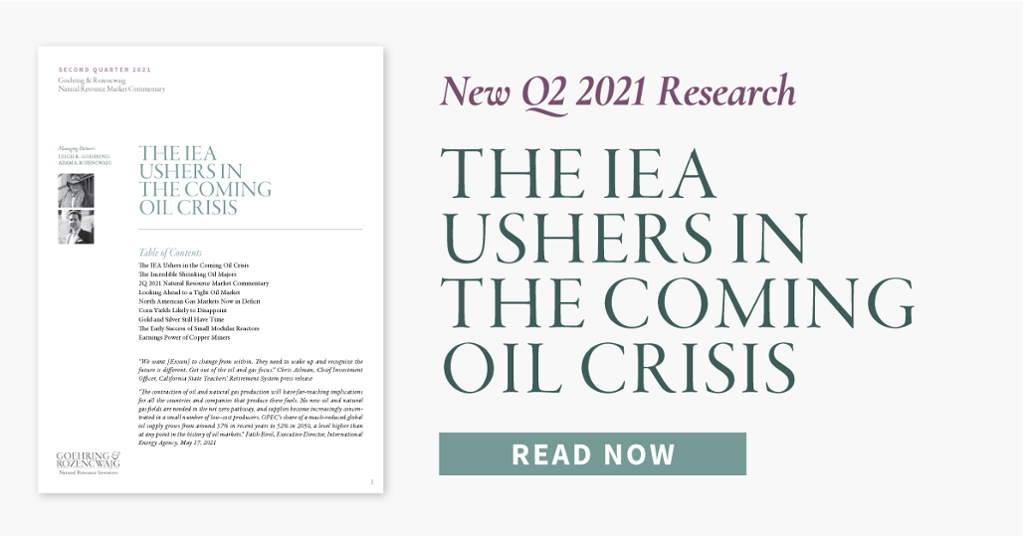First appeared in Q2 2021 letter
Last summer, we predicted global oil demand would quickly regain its pre-COVID peak as travel restrictions were lifted. Clearly, in retrospect, we were too optimistic. As various second and third waves propagated through the fall, winter and spring, many countries chose to reimpose lockdowns and quarantines, leading to ongoing demand disruptions.

On the other hand, underlying demand trends have remained extremely strong even in the face of such measures. In many cases, oil demand never fell as sharply as expected and most often surged back faster than anyone believed possible. During the worst of last year’s oil rout, analysts questioned whether demand would ever regain its old peak. The IEA laid out a “Sustainable Development Scenario” as recently as October 2020 that concluded oil demand may have peaked in 2019. While we have not yet surpassed the old highs, we are well on our way. In both the US and China, where most restrictions have been lifted, oil demand has already surpassed all-time highs. Neither country is yet back to normal in terms of air travel and so demand will likely continue to surge from here.
In their most recent Oil Market Report, the IEA now predicts 2021 global demand will average 96.4 mm b/d. While this is a dramatic improvement over last year’s 91.1 m b/d, it is still a far cry from 2019’s 99.7 mm b/d. Furthermore, the 2021 demand figure was revised lower by 600,000 b/d between the IEA’s December 2020 and July 2021 reports. While on the surface this is a bearish development, we believe the headline numbers are misleading.
First, the “balancing item” averaged a robust 600,000 b/d during the first half, implying that COVID related lockdowns never impacted demand as much as the IEA estimated in their downward revisions. As our readers know, the IEA introduces a balancing item when it cannot get supply, demand, and inventories to properly balance. We have long argued the balancing item represents underestimated demand and historically a large balancing item has been followed by upward demand revisions. We believe this time will be no different. Adding a 600,000 b/d balancing item takes 2021 demand to 97.0 mm b/d, flat with the IEA’s projections from December 2020.
Next, the bulk of the disappointment during the first half came from India as COVID-19 spread at an alarming rate. Indian demand was revised down in the first half by over 325,000 b/d or 6%. Removing India and adding the balancing item to the IEA’s demand figures suggests the rest of the world outperformed the IEA’s expectations for the first half while projections for the second half are now nearly 600,000 b/d higher than they were in December 2020. Given that Indian case numbers are thankfully falling dramatically, we expect to see a strong rebound there as well.
In their most recent report, the IEA admits that demand surged by over 3 m b/d in June and believes “robust global economic growth, rising vaccination rates and easing social distancing measures will combine to underpin stronger global oil demand for the remainder of the year.” While we agree with the sentiment, we believe this reality is not yet reflected in their demand figures. The IEA currently projects 2022 demand will average 99.5 mm b/d, still below 2019 levels. Instead, we believe ever more countries will surpass their previous demand records and that 2022 demand will need to be revised higher by nearly 1 mm b/d.
Intrigued? To read more on this subject, we encourage you to download the full commentary, available below.


